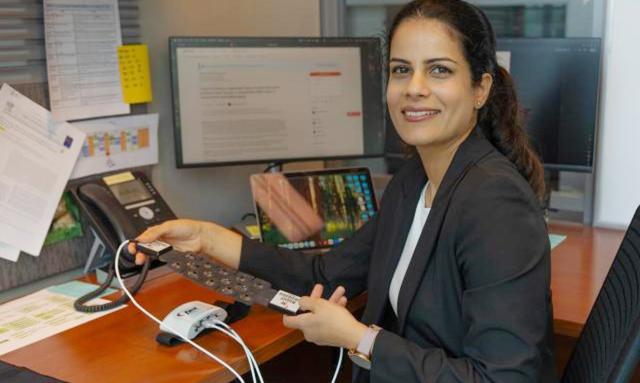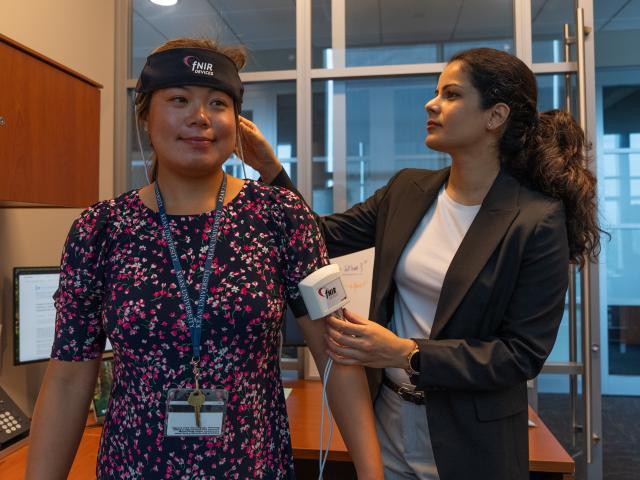Kean University Researcher Conducts Study on Osteoarthritis’ Impact on the Brain

Kean University Assistant Professor Alka Bishnoi, Ph.D.
Kean University Assistant Professor Alka Bishnoi, Ph.D., has published research on the link between balance and cognition in women with osteoarthritis (OA), suggesting the disease may reduce the brain’s ability to react to challenging balance tasks.
Bishnoi led a multi-university team of researchers in the work, which was recently published in the journal Frontiers in Aging Neuroscience. In the study, a group of older women with OA performed a series of balance tasks while wearing a functional near infrared spectroscopy (fNIRS) headband with fiber‑optic light sources and detectors that measured brain activity. A control group of women without OA performed the same tasks, allowing researchers to measure and compare how the brain reacted.

“We were interested in how balance would affect the prefrontal cortex of the brain. We found a difference in the way people with OA were behaving, compared to people with a healthy brain,” Bishnoi said. “Knowing this difference would allow us to better design interventions to help people in the future.”
OA is a degenerative joint disease that leads to pain, stiffness, and swelling in the affected joint. The research project began in 2019 when Bishnoi was studying for her doctorate at the University of Illinois at Urbana-Champaign (UIUC) and working with a team of researchers collecting data for a larger project on OA. The balance tests were conducted at the Mobility and Fall Prevention Research Laboratory at UIUC.
A member of the faculty at Kean for three years, Bishnoi focuses her research on the aging population. She said traditional care for those with OA primarily addresses patients’ musculature, but the new findings suggest a need to address the brain as well.
“My entire focus is to build on the clinical perspective of not forgetting that the brain is an important area for the execution of tasks, especially in these populations that are at risk of losing executive function because of pain, cardiovascular or neurological disorder or aging,” she said. “If you do controlled brain exercises or cognitive exercises, it may help improve balance.”
Bishnoi said the findings also suggest the importance of further research on the association of cognitive impairment with chronic pain, using a larger cohort of both men and women.
“Both groups demonstrated increased prefrontal cortical activation with task difficulty. However, OA participants exhibited diminished capacity to recruit additional attentional resources compared to (the control group), emphasizing the need for further research with larger cohorts to elucidate these findings,” the researchers wrote. “The findings underscore the need for comprehensive interventions that simultaneously address cognitive and motor deficits in OA.”
James F. Konopack, Ph.D., dean of the College of Health Professions and Human Services at Kean, said Bishnoi’s research sheds light on a condition that affects millions.
“We know that millions of adults are living with osteoarthritis, which comes with not only pain but also with an increased risk of injurious falling, so this research is clearly important for public health,” he said. “Scientifically, this research is an intriguing demonstration of OA reducing a person's ability to recruit attentional resources toward a challenging task, whether due to the influence of pain or some other mechanism affecting prefrontal cortical activity in the women in this study. Perhaps we will learn more about those mechanisms in Dr. Bishnoi's future publications.”
Other researchers who collaborated with Dr. Bishnoi on the study were Yang Hu, Ph.D., an assistant professor at San Jose State University, and Manuel Enrique Hernandez, Ph.D., a teaching and research associate professor at the University of Illinois at Urbana-Champaign.